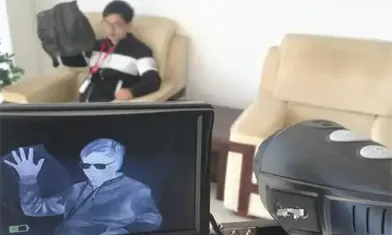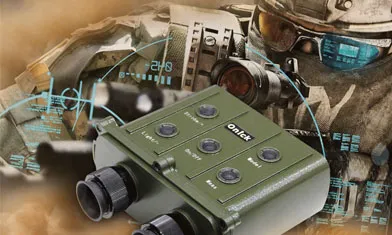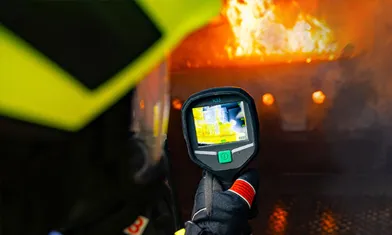Can Infrared Thermal Imaging Cameras See Human Bodies Through Walls?
With the advancement of technology, all sorts of fantastical fantasies are becoming increasingly possible. Thermal imaging technology is one such example. It's often portrayed in films and television as a high-tech artifact capable of seeing through walls. But is this ability truly possible?
Thermal imaging technology, also known as infrared thermography, works on a simple principle: an object's temperature determines the amount of infrared radiation it radiates. Every object radiates infrared light at varying intensities, directly related to its surface temperature. A thermal imaging camera captures this infrared radiation and converts it into a visible thermal image, revealing the object's temperature distribution.
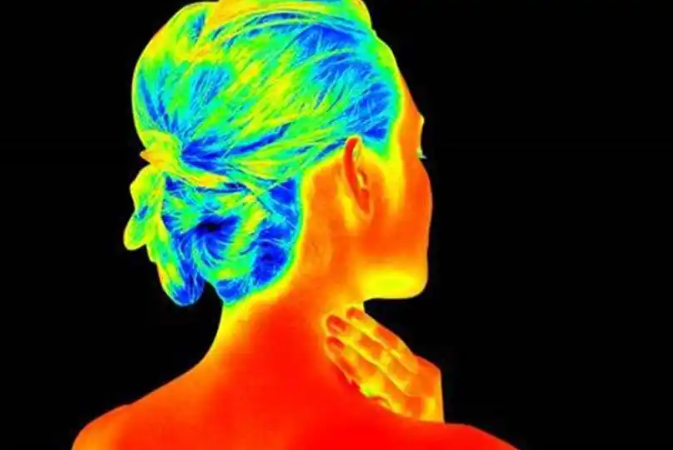
1. Night vision goggles can observe the human body through walls, a phenomenon that has garnered widespread interest.
2. In reality, night vision goggles and thermal imaging cameras differ in how they observe the human body.
3. Night vision goggles improve visibility in low light by converting invisible light into visible light.
4. This conversion is based on the photoelectric effect, discovered by an Irishman named Smith in the 19th century.
5. Modern technology can convert objects of varying brightness into electrical signals by frequency conversion, phase conversion, and amplification. 6. Scanning technology converts optical images into electrical images, which are ultimately restored to optical images through imaging technology, enabling observation.
7. Infrared night vision devices illuminate targets with infrared light, converting invisible infrared images into visible optical images.
8. Thermal imaging uses the temperature or emissivity difference between the target and the surrounding environment to display the infrared radiation energy density distribution as a thermal image.
9. Thermal imagers directly display infrared images, representing temperature differences with different colors, allowing identification of human body temperatures.
10. Therefore, thermal imagers can display any location with a temperature, allowing human body temperatures to be observed.
However, this technology cannot truly see through walls. Walls themselves do not emit sufficient infrared radiation, so thermal imaging cameras cannot "see through" them.
So, although we may see in movies how American soldiers use thermal imaging technology to see through walls and see the enemy, scientifically speaking, this is not feasible in reality.
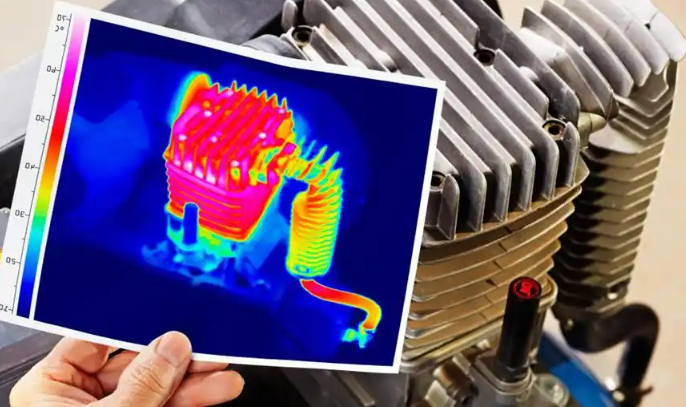
The origins of thermal imaging technology can be traced back to the late 19th century. At that time, scientists began studying the phenomenon of thermal radiation and discovered that objects of different temperatures emit heat energy as infrared radiation at different frequencies. This discovery laid the foundation for the subsequent development of thermal imaging technology.
With the advancement of technology, thermal imaging technology began to gain widespread attention during World War I. In particular, the military began exploring how to use thermal radiation to detect targets.

The advent of thermal imaging cameras made the power of thermal imaging accessible to ordinary people, and thermal imaging technology has shown broad application prospects in fields such as architecture, medicine, and environmental protection.
Next, let Onick Skylar introduce several of the latest thermal imagers:
1. Onick RE650 Handheld Three-Light Thermal Imager
The RE650 is a handheld three-light thermal imaging reconnaissance device equipped with a TV camera, an uncooled infrared thermal imager, a laser rangefinder, GPS, and an electronic compass. It enables all-weather day and night reconnaissance and target location. It offers excellent infrared imaging, a compact and lightweight design, low power consumption, simple controls, and a lightweight, portable design with a comfortable grip. This product utilizes a high-resolution infrared sensor, offering excellent infrared imaging, ultra-low power consumption, fast startup, simple operation, and a compact and stable structure.
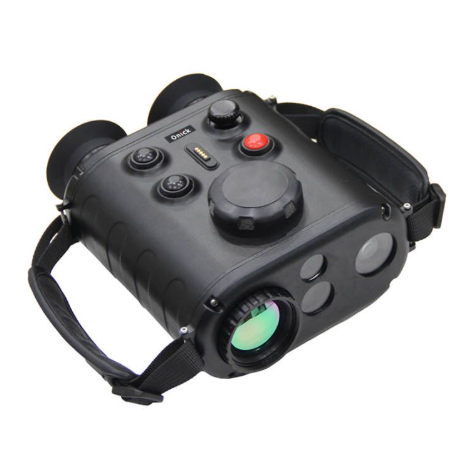
Main Functions:
1. Infrared and white light imaging, binocular observation, and image and video storage;
2. Electronic zoom: 1.0× to 8.0×, stepless, in 0.1× increments;
3. Laser ranging, Beidou positioning, compass orientation, target location, and trajectory calculation;
4. Reserved expansion ports for external humidity sensors, anemometers, etc.;
5. Features fog penetration, roll angle, pitch angle, altitude, and air pressure sensors, as well as fault diagnosis;
6. AI-powered recognition of human and vehicle targets; locks on and identifies drones.
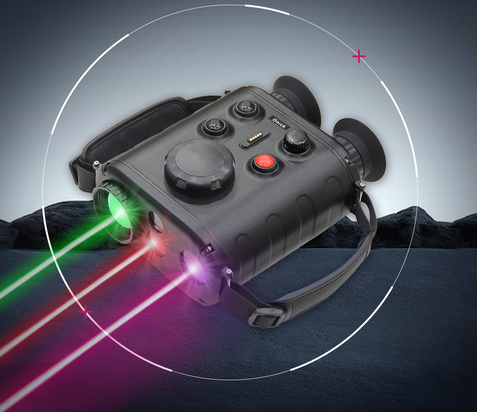
2. onick RE350LRF Laser Ranging Binocular Infrared Thermal Imaging Handheld Reconnaissance Camera
The RE350LRF Laser Ranging Binocular Infrared Thermal Imaging Handheld Camera is equipped with a new high-sensitivity uncooled infrared focal plane detector, advanced imaging circuitry, and an optimized optical system. The product's exterior and structural design is ergonomically optimized. The Onick RE350LRF laser ranging binocular handheld thermal imager features a built-in laser ranging module and supports laser ranging. It offers excellent infrared imaging, a compact and lightweight design, low power consumption, simple controls, a lightweight and portable structure, and a comfortable grip. It comes with a high-quality rubber soft case optimized for the human hand, ensuring a comfortable grip with either one or both hands. Its enhanced waterproof design achieves an IP67 rating.
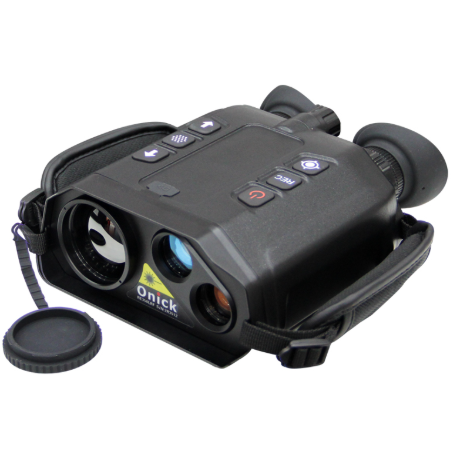

The Onick RE350LRF can be used for handheld or fixed observation, night reconnaissance, evidence collection, and target search. It also features photo and video recording for long-term video recording. It uses a single internal rechargeable battery for up to eight hours of continuous operation. The Onick RE350LRF includes GPS and Beidou positioning, an electronic compass, and Wi-Fi transmission.
3. Onick RM-1 Multi-Function Monocular Thermal Imaging Riflescope
The Onick RM-1 multi-function thermal imager is a high-performance infrared observation device equipped with a highly sensitive vanadium oxide uncooled infrared detector and a full-color OLED 1024x768 HD display. It utilizes barrier-free technology for continuous, smooth image quality, making it suitable for long-distance observation in a variety of scenarios.
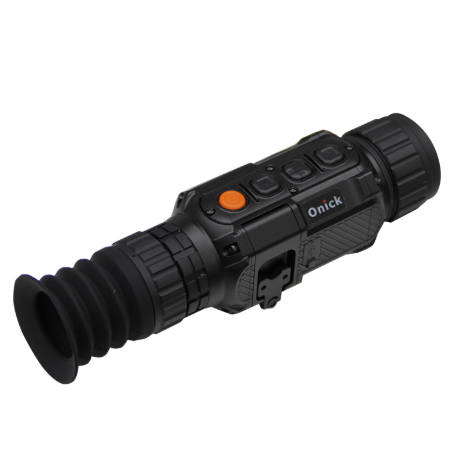
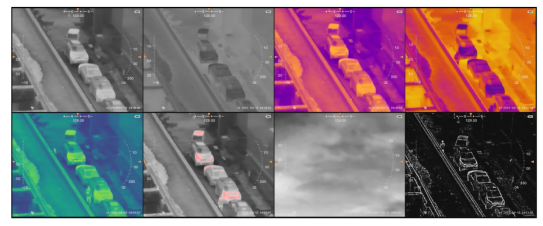
Product features:
1. Supports photo and video evidence collection functions, and can record video images for a long time;
2. Built-in laser ranging module, supports 2000m laser ranging, with high ranging accuracy;
3. With GPS Beidou positioning, electronic compass function, WIFI transmission function;
4. Long standby time, built-in rechargeable battery, continuous working time can reach 8 hours;
5. Small and light, low power consumption, simple operation, light and portable appearance structure, ergonomic structure;
6. Fast start-up, simple operation, compact and stable structure, protection level IP67;
Approved for China's recognition and international mutual recognition inspection report: Inspection report of the Quality Inspection Center of Security and Police Electronic Products of the Ministry of Public Security, Gongjingjian No. 2306110045.
There’s more to know about thermal imagers! Contact me: skylar@onick-optics.com
